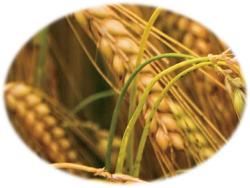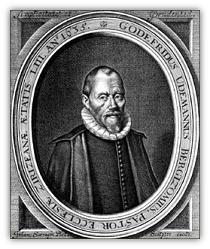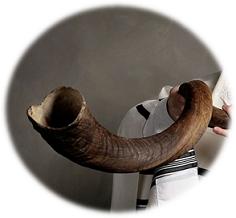The Second or "Further" Reformation
The Second or "Further" Reformation
A few months ago we wrote an article about the work of God in the Reformation of the church, in His giving men taught by the Spirit who tried to bring the people back to the Word of God and the doctrine of salvation by free grace for lost sinners.
We have seen that the Reformers were also interested in society life and education of the youth. They knew that a reformation of the church also would have consequences for daily life. This renewing work of God had to penetrate all relationships, and fruits had to be seen in daily practice.
About 1600, the Reformation had many supporters in England, Germany and the Netherlands; many were wholeheartedly attached to the new doctrine. Years later the battle for freedom of religion was finished; one could confess Reformed doctrine in peace and in freedom. The number of members of the Protestant churches increased rapidly; it was no longer dangerous to belong to them. In about 1650, a significant part of the population was Reformed in the Netherlands.  As it often happens in times of rest and prosperity, soon there were tokens of decay. There was a lot of chaff among the wheat. Soon the pure doctrine was attacked by heresies, even though the Reformed principles were defended by gifted and qualified theologians; think of Gomarus and Voetius. A Synod was held where the doctrine of free grace was firmly defended and a very clear testimony was given in the "Canons of Dordt." However, the practice of many was not in agreement with their confession, so a second or "further" reformation appeared to be necessary.
As it often happens in times of rest and prosperity, soon there were tokens of decay. There was a lot of chaff among the wheat. Soon the pure doctrine was attacked by heresies, even though the Reformed principles were defended by gifted and qualified theologians; think of Gomarus and Voetius. A Synod was held where the doctrine of free grace was firmly defended and a very clear testimony was given in the "Canons of Dordt." However, the practice of many was not in agreement with their confession, so a second or "further" reformation appeared to be necessary.
In Germany, a reaction to dead orthodoxy surfaced in a movement which devoted itself to the practice of faith and to a pious way of life. German Pietism emphasized more the way of life than the purity of doctrine. A few characteristics of German Pietism are:
- Personal, individual piety; experience instead of dead orthodoxy.
- "Praxis Pietatis," i.e., sanctification of life in true godliness.
- Ascetic elements: no worldly delights, objections against dancing, playing with cards, acting in theatres, worldly books and plays.
- A hearty relationship with other believers, emphasized in the priesthood of all believers.
One of the first leaders of this movement was Philip Jacobus Spener. He was influenced by Jean de Labadie. He heard his sermons about the necessity of revival, that a further reformation was needed instead of dead orthodoxy without practice. He promoted his ideas after 1670, in small conventicles ("collegia pietatis"). In his writings he firmly recommends:
- Much individual and common Bible study.
- Christianity of deeds.
- Tolerance of religious differences.
- Priesthood of all believers.
- A simple and practical style of preaching.
August Herman Francke, a follower of these principles, was appointed as professor at the University of Halle. This man has done a lot to distribute pietistic opinions. Fruits were shown in the establishment of various philanthropic institutions for education and labors of mercy. They promoted missions in Asia and later among the Jews.
In England, in the same age, there was also a movement which was zealous for the reformation of the life, especially by the Puritans. They could be found among the Dissenters, Presbyterians and Baptist groups, but also in the State church were pietistic groups. Perkins was one of the first well-known Puritan preachers. In the Netherlands the same phenomenon appeared in Reformed Pietism, or the more preferable name – The Second (or "Further") Reformation.
 The name Second Reformation is a more suitable indication of this movement, since this reformation was of an earlier time than German Pietism. Already in 1612 the minister Godefridus Udemans, of Zierikzee, Holland blew the trumpet and published a booklet Practijcke, wherein he recommended an efficacious practice of the Christian virtues of faith, hope and love. He showed his interest in the activities of business companies who were involved in trading with the East and West Indies. This name was also preferable because it shows us the close relation with the first Reformation.
The name Second Reformation is a more suitable indication of this movement, since this reformation was of an earlier time than German Pietism. Already in 1612 the minister Godefridus Udemans, of Zierikzee, Holland blew the trumpet and published a booklet Practijcke, wherein he recommended an efficacious practice of the Christian virtues of faith, hope and love. He showed his interest in the activities of business companies who were involved in trading with the East and West Indies. This name was also preferable because it shows us the close relation with the first Reformation.
There is a very important difference between German Pietism and the Second Reformation in the Netherlands. In the last movement, purity of doctrine was connected with the pious way of life. In the German movement there was the danger of penetration of wrong human opinions and errors, but in the Second Reformation there was a zeal for the truth closely related with the practice of godliness.
There is a close relation between English Puritanism and the Second Reformation in Holland, probably by the influence of Willem Teellinck and a student of William Perkins, William Ames, who became a professor in Holland. Although there are indications that the movement in the Netherlands was influenced by the labors of English Puritans, the roots of both movements lie in the time of Reformation itself.
Already before the Reformation the Lord gave men, also in Holland, who saw the decay and corruption of the church and who strongly emphasized the necessity of the practice of godliness. They protested and testified against the ungodly way of life of clergymen, priests and bishops. We think of men as Geert Grote, Wessel Gansfort, Thomas a Kempis, the men of "De Broeders des Gemenen levens," or "Modern Devotion."
The roots of English Puritanism and Second Reformation can be found especially in the works of Bucer, the Reformer of Strassburg. Especially in the last part of his life Martin Bucer warned that the true members of the body of Christ are known by their fruits. He said that he would instruct and teach those who wanted to become members. He emphasized that only members who revealed some fruits of their new life in their daily walk should be admitted to the Lord's Supper. He was zealous for the strict observance of the Lord's Day, and spoke about the marks of communion with Christ revealed in fruits of love to neighbors. Hence Martin Bucer has been called, "Pietist among the Reformers."
How greatly blessed the church of the 17th century was with men as Ewoud and Willem Teellinck, Theodorus a Brakel and his son Wilhelmus a Brakel, the learned professor Voetius, his student Jakobus Koelman, and the preacher of penitential sermons, Jodocus van Lodensteyn.
We all probably know the names of some "old writers" of a later time: Bernardus Smytegelt, Alexander Comrie and Theodorus van der Groe.  How the Lord gave them as lights on a candlestick, as salt with savour, as watchmen on the walls of Jerusalem who blew the trumpet, warning, encouraging, instructing, seeking the welfare of the church, and the honor of God! However, we fear that many of us, also of the younger generation, do not know much anymore of them but their names. It could be instructive if we also could mention something more of their life and their work.
How the Lord gave them as lights on a candlestick, as salt with savour, as watchmen on the walls of Jerusalem who blew the trumpet, warning, encouraging, instructing, seeking the welfare of the church, and the honor of God! However, we fear that many of us, also of the younger generation, do not know much anymore of them but their names. It could be instructive if we also could mention something more of their life and their work.
With the help of the Lord we intend to write some articles in the future about the life and work of some well-known old fathers, and that not with the intention to glorify sinful men, but may it be to honor the work of God for and in His church. May young and older people, by means of these endeavors, be made jealous for the work of God that is so clearly revealed in their life and writings. Then the lessons of the past would also be instructive for the profit of the church of today, for us and our children, and to the honor of Him who promised His disciples, "And, lo, I am with you always, even unto the end of the world" (Matt. 28:20).
That is our wish and hearty desire.

Add new comment